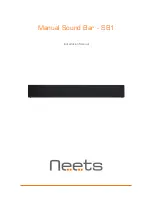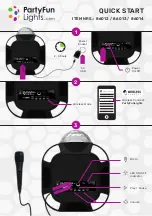
A
HE, DE & RE MANUAL
IOM-26
24 of 33
Oct 12 R4
OPERATIONAL CHECK
CALL A QUALIFIED SERVICE PERSON FOR SERVICE.
1.
Turn on main and pilot valve up stream of manual firing shut-off valves and check for leaks on unit
piping.
2.
Check for leaking main and pilot valve seats by closing the manual firing valve and safety shut-off
valve. Connect one end of a hose to the pressure tap between the manual firing valve and safety
shut-off valve and submerge the other end in a cup of water. If bubbles appear, correct leak.
3.
The pilot pressure is preset in the factory and should not require adjustment.
4.
To start the bl
ower, set the remote manual switches to the “on” position. Switch on the exhaust
system to make the exhaust interlock. The damper should begin opening. When fully open, the
damper blade will make an end switch that will start the blower. If the control system includes an
auto bypass low limit, for convenience, the low limit can be jumpered out during start-up and
adjustment of other controls. Remove the jumper when start-up is completed and check the low
limit and bypass function.
5.
To start the heat, open the pilot manual firing valve and turn on the heat switch on the remote
panel. The pilot should attempt ignition. If an attempt at ignition is made and lockout occurs, reset
the flame relay and visually check a second time to confirm that there is a pilot flame. If there is
pilot flame for 8 seconds before flame ignition control lockout, a safety control in the flame sensing
circuit is likely the problem. For example a lockout will occur if the air pressure switches are not
made. Refer to separate trouble shooting guide for additional information. Also check spark rod
and flame rod to see if the ceramic is wet, cracked or dirty as any one of these things can cause
lockout. The gap on the spark rod is 3/32". If the unit has a Fireye M SERIES II flame ignition
control, a D.C. voltmeter micro ammeter is required to check the flame rod signal. A set of test
jacks is provided in the flame ignition control for this test. The signal should be at least 10 VDC. If
the signal is less than 10 VDC and a pilot flame is present, refer to the separate trouble shooting
guide.
6.
After achieving a pilot that burns constantly while the blower is running, check the main gas valves
for operation while the main manual firing valve is
CLOSED
. Turn the heat switch off. The pilot will
then go out. Place a pressure gauge between the automatic valve(s) and the manual firing valve.
Switch on the burner. If the pilot comes on and proves properly, the main automatic valve should
open and the gauge should register pressure. The pressure gauge may read negative at reduced
inputs. If the main valve(s) do not open, check for a wiring error or a defective component.
7.
Test for main flame ignition. With the main automatic valve open, manually open the firing valve
from closed to open. Main burner ignition should take place approximately one quarter of a turn
from closed to open.
8.
The heater has been designed and built for the specific air volume, external static pressure (duct
pressure) and air temperature rise shown on the rating plate and in the submittal record. No
adjustment of the profile plate should be required.










































